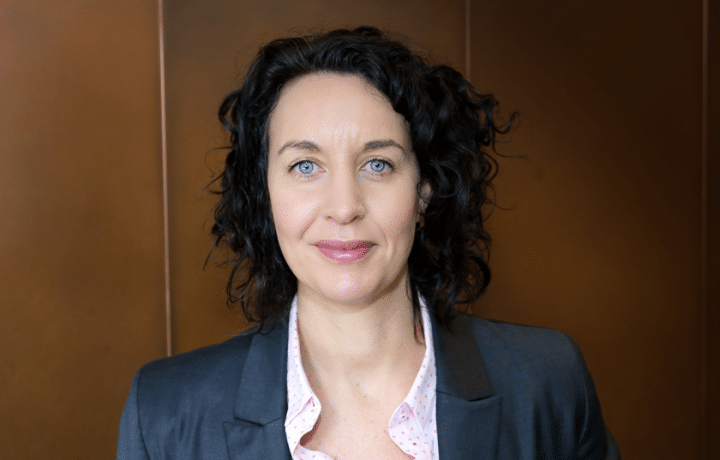Exclusive conversation with Kathryn McMullan, Director, Australian Geospatial Intelligence Organization ( AGO) on changing GeoInt landscape, uncertainties in the Indo-Pacific, women leadership in the intel community, and more.
Tell us about the outlook and vision of AGO?
As part of Defence and as a member of Australia’s National Intelligence Community, AGO is contributing to the delivery of National Defence as enshrined in the National Defence Strategy (NDS).
This includes enabling all six capability effects outlined in the NDS: projection of force; holding a potential adversary’s forces at risk; protecting ADF forces and supporting critical infrastructure in Australia; sustaining protracted combat operations; maintaining persistent situational awareness in our primary area of military interest; and achieving decision advantage.
With an increasingly complex geopolitical environment demanding an integrated, focused force, AGO must continue to convert GEOINT into an integrated and future-focused capability that provides Australia with decision superiority.
Concurrently, AGO must also continue to work with partners within the Australian emergency response services, the mariner and hydrography communities and the broader geospatial and space sectors. Our services provide crucial geospatial insights that, through our stakeholders and partners, enhance Australia’s security and prosperity.
We inhabit a world defined by a lot of vulnerability, uncertainty, complexity, and entropy. Is there a need for countries to design new security architectures with spatial tech embedded at the core?
GEOINT and geospatial data are essential to delivering National Defence and, in turn, preserving regional stability. GEOINT provides critical intelligence insights, strategic warning, support to military operations and safety of navigation that will enable the integrated, focused force and ensure our collective security.
The concurrent increase in demand for geospatial data and rapid technological development presents significant opportunities for AGO to drive transformative change in GEOINT to address the challenges we face. Building strong partnerships across geospatial professions is fundamental to delivering this transformation.
The global defense and security landscape has transformed over the years with digitalization, connectivity, and an enormous profusion of data. Do we need to re-evaluate the role of geospatial intelligence in this scenario?
Geospatial data is critical to almost every industry – including mining, ocean conservation, and agriculture – and new technologies are providing unparalleled opportunities to collect and analyze data, further reinforcing the importance and ubiquity of geospatial expertise.
I believe we’ve entered a critical era for geospatial intelligence (GEOINT). Our increasingly interconnected world relies on precision and accuracy and the demand for GEOINT and geospatial data is growing rapidly. This environment presents new opportunities for AGO and our customers.
This evolving reality means we must continue to develop geospatial knowledge and practices to tackle emerging challenges in defense and security. Industry and academia will play an important role in harnessing new tradecraft and emerging technologies to enhance our security during a period of global uncertainty.
What would be the peculiar challenges posed by AI in ISR ( Intelligence, Surveillance, Reconnaissance) and safeguarding national security?
As in so many other industries, AI presents both challenges and opportunities to our field. I am optimistic about the potential for AI to make the jobs of analysts and decision-makers easier and more efficient by streamlining routine tasks that once required significant time and resources to complete, particularly data collection and analysis.
I do not expect AI to undercut the need for human analysis in the GEOINT field, but rather to serve as a complementary tool allowing intelligence professionals more time to focus on strategic work.
That said, there will be an ongoing need to provide training and education programs to keep pace with advancements in AI to ensure analysts possess the skills and knowledge required to operate systems effectively and ethically.
Of course, this alludes to the need for effective and ethical governance around AI to ensure that decisions are based on trusted and assured data, which is of course highly relevant to safeguarding national security.
How can India and Australia boost collaboration in geospatial intelligence, especially in the context of Indo-Pacific maritime security?
India is a top-tier security partner for Australia and we share a deep strategic alignment. Through the Comprehensive Strategic Partnership, the Government is continuing to prioritize practical and tangible cooperation that directly contributes to Indo-Pacific stability.
This includes increasing the depth and complexity of the engagements between our Defence Forces and enhancing our shared maritime domain awareness. AGO’s Australian Hydrographic Office is building relationships with India through its respective hydrographic organizations to support this cooperation.
You are the first woman to head AGO. How has the journey been, and what would be your message to women in national security and intelligence?
I am the second woman to head AGO. Maria Fernandez was the first, leading DIGO/AGO from 2012 to 2015. Maria was also the first woman to head an Australian intelligence agency, a true trailblazer for women in national security.
Female leadership in national security and intelligence has been important in addressing contemporary security threats both in Australia and on a global scale.
We have seen great advancements in female representation – indeed, five of the ten National Intelligence Community agencies are currently led by women. But ultimately the best leadership and decision-making occurs when there are diverse experiences and views, and a healthy respect for different perspectives. Gender diversity is but one element in achieving that.








